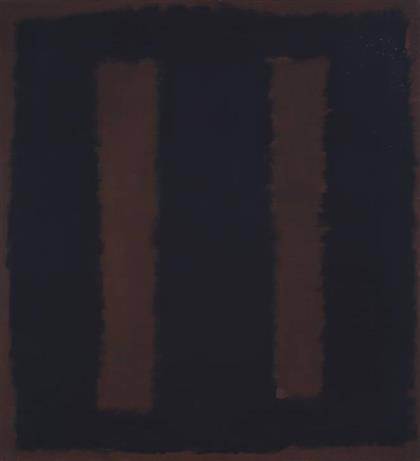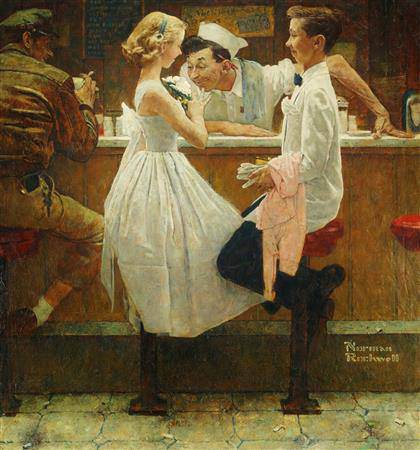
Mark Rothko: “Black on Maroon“, 1958
Mixed media on canvas, support: 2286 x 2070 mm
Presented by the artist through the American Federation of Arts 1969
© Kate Rothko Prizel and Christopher Rothko/DACS 1998
Restoring Rothko – Tate
Restored Rothko returns to Tate Modern Mark Rothko’s ‘Black on Maroon’ (1958) goes back on public view at Tate Modern, following 18 months of extensive conservation work by Tate’s Collection Care team.]]>
May 17, 2014, source: Tate Modern
This painting, one of the iconic Seagram murals which Rothko donated to Tate in 1970, was vandalised with graffiti ink in October 2012. It has since been the subject of detailed research and restoration, supported by Tate Patrons and donations to the Tate Fund, and is now being returned to the gallery’s free collection displays.
Rothko’s works are renowned for the subtlety of their layered surfaces, which include complex combinations of oils, pigments, colourants, resins, egg and glues. Before attempting to restore “Black on Maroon”, its many layers of different materials had to be analysed from microscopic samples, building on the detailed research conducted for the 2008 Rothko exhibition at Tate Modern. The graffiti ink had penetrated several of these layers, in some cases soaking through to the back of the canvas, requiring a chemical solvent to be found which could remove this ink while limiting damage to the surrounding original paint. Dr. Bronwyn Ormsby, Conservation Scientist at Tate, worked with colleagues to narrow down the field from hundreds of potential solvents in order to find the best possible solution: a blend of benzyl alcohol and ethyl lactate.
Special test canvases were then used to assess the appropriate solvents and cleaning methods. Based on extensive research, the treatment team created a large-scale painted sample which attempted to accurately represent the layers in the painting, artificially ageing the sample with heat and light to approximate the material properties of the 1958 painting. The Rothko family also donated a canvas for further testing, one which the artist had primed with maroon paint at the time of the Seagram commission in the 1950s.
Using the meticulous cleaning and retouching methods honed from this 9 month testing process, Rachel Barker, Paintings Conservator at Tate, then spent a further 9 months working on “Black on Maroon” itself. She painstakingly removed the majority of the surface ink before reversible conservation-grade materials were used to restore the painting’s surface. All this research and conservation work was undertaken in close consultation with the Rothko family and with international experts with long experience of working with Rothko’s paintings.
Related content
Rothko’s “Orange, Red, Yellow” sells for $86,9 million (news, May 2012)
Follow us on:


